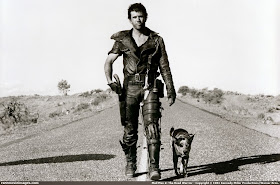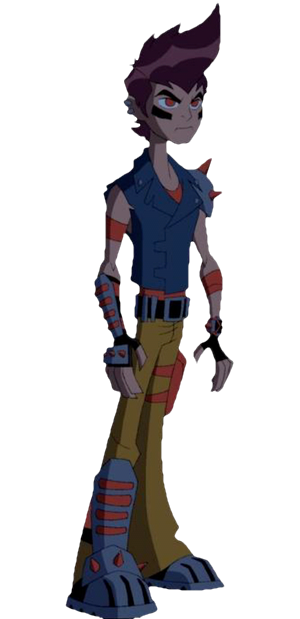


He doesn’t get old over, what, half a century now? It’s the same thing. It’s not precise chronology, because I never intended for there to be, but after the last one. If this film had to be fit into the timeline of the other three films, where does it go? I mean, the concept of Max, once it was going to be a chase and the McGuffin was going to be five females and we had a female road warrior, Max starts off like a wild animal – less than a human being, and we see the merge. Well, yeah, the character, we know more about post-traumatic stress. Mel Gibson’s Mad Max is less mad than Tom Hardy’s Mad Max. I used to think The Road Warrior was nuts, now it seems less nuts. I re-watched The Road Warrior after seeing Fury Road. He told us, “I’m scared of heights!” Well, I’m scared of heights, too. It was so safe, we got Tom Hardy up there. And one day I looked up and there were eight of them coming out of the desert. I thought we’d put the poles on the vehicles, then we’d complement with CGI. I never thought – never thought – we could do that safely. But there’s a resurgence - the next Star Wars used a lot more practical effects. If you did, it wouldn’t get the reaction it’s getting. It was real vehicles, real people and real desert.ĭid someone along the way ever say, “If you use more CGI, you can save some money.” And this is a film that does not defy the laws of gravity – there are no flying humans or spacecraft – so it really had to be old school. We are very, very skilled at watching, no matter how good it is. You must be enjoying the almost unexpected resurgence of practical effects.

Last time I checked, it was still 100 percent positive. Have you seen the reviews? They just came out. Ahead, Miller talks about the changing landscape of filmmaking and why he decided to return to the world of Mad Max, why he looked to the past to make a modern blockbuster – and how his foray into animation made him a better live-action filmmaker. Miller hadn’t seen them yet, but reacted like a school kid, cheering and slapping his lap when I told him how positive they were. I met Miller on Monday morning at Warner Bros.’ offices in New York City, shortly after the first round of reviews had hit the Internet.
#Mad max timeline movie#
It’s safe to say you’ve never seen a movie quite like Mad Max: Fury Road. The result is basically a two-hour, insanely elaborate and choreographed car chase. In Mad Max: Fury Road, Tom Hardy takes over as the title character, Max Rockatansky (Miller confirms that Fury Road takes place after Thunderdome, but not so far after that Max would have aged much, hence the part being recast – he compares Max to James Bond) and the plot is fairly simple: the hard-driving Furiosa (Charlize Theron) and outsider Max are helping five women escape their tyrant husband, Immortan Joe (Hugh Keays-Byrne) Immortan Joe wants them back. After watching Mad Max: Fury Road, that assumption proves to be very, very wrong. For awhile, it at least seemed like Miller’s filmmaking style had mellowed since his three Mel Gibson-starring Mad Max movies. When you meet George Miller, it’s hard to believe that this exceedingly nice 70-year-old man had this movie cooking inside him while he made two Babe movies (he wrote and produced both he directed the sequel) and two Happy Feet movies. What we get might just be the perfect purist, raw action movie ever made. As Miller explains, it combines the fast pace of current American blockbusters with the real deal practical effects from 30 years ago. (Just check out that obscenely great Rotten Tomatoes score.) There’s no doubt about it, Fury Road is a throwback (or, as Miller calls it, “old school”) feature that feels not as much a movie from a different era, but more a movie from no era. In a way, it’s kind of weird that if George Miller had released his fourth Mad Max movie in the ‘90s as originally planned, Mad Max: Fury Road probably wouldn’t be receiving all of the hullabaloo that it’s receiving now.


 0 kommentar(er)
0 kommentar(er)
